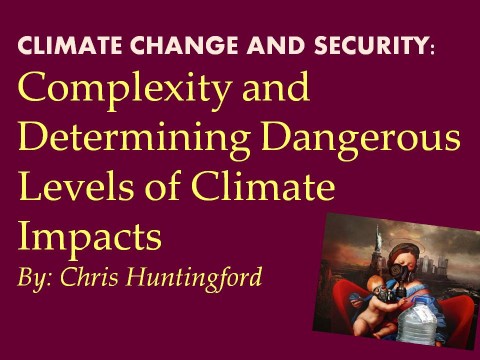Complexity and Determining Dangerous Levels of Climate Impacts

Initiating and Sustaining Action: Experiences Building Resilience to Climate Change in Asian Cities.
November 30, 2016
OMLC Project Leaders, Glenn S. Banaguas and Dr. Damasa Magcale-Macandog are 2014 NAST Awardees
November 30, 2016Abstract:
A recent paper (Gerten et al 2013 Environ. Res. Lett. 8 034032) finds very different global warming thresholds of concern between water scarcity and ecosystem changes.This may at first appear surprising, as each process is controlled to some extent by functioning of the land surface. Hence this analysis reflects the fundamentally different character of what constitutes water scarcity among people, compared to water stress for ecosystems. Gerten et al (2013 Environ. Res. Lett. 8 034032) find both responses to warming are highly nonlinear, but in opposite senses. Water scarcity could affect multiple millions of people for even low levels of warming, but that number would almost stabilize should warming continue. In contrast, ecosystem changes become massively more responsive to climate change at higher warming levels. This re-iterates how complex the Earth system is, making it difficult to determine what constitutes overall single thresholds of climate change society may choose to consider avoiding. However, it is argued here that such targets are still much needed, providing a focal point for discussion, and complexity should not be used as an excuse to prevent setting them.
See the full article here

